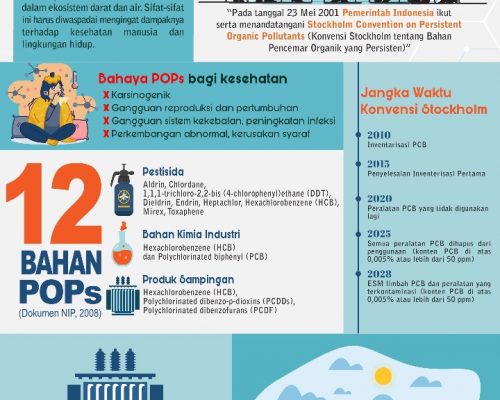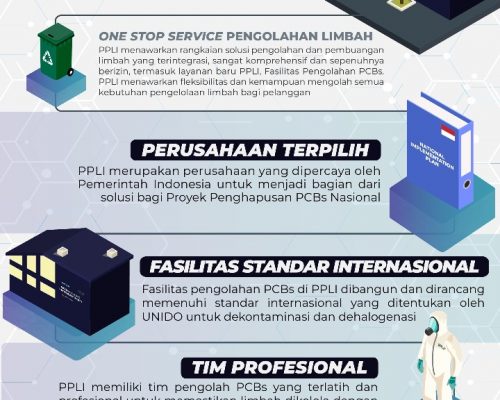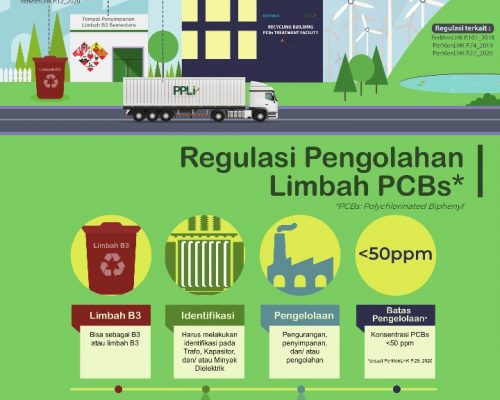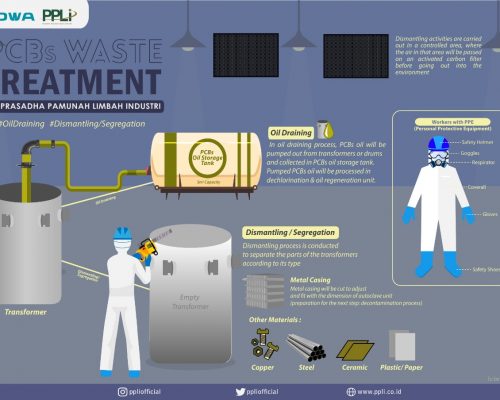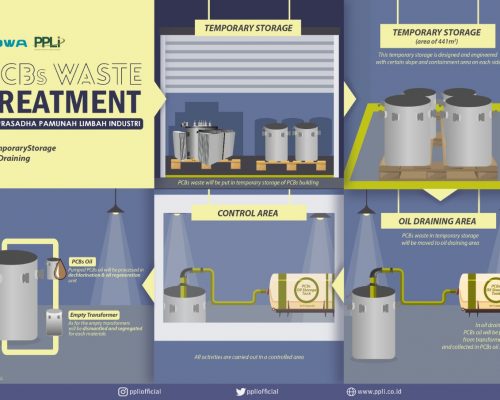PCBs TREATMENT FACILITIES
Introduction
Uses of Polychlorinated Biphenyls (PCBs)
High chemical stability and low flammability made PCBs ideal for many applications:
- Dielectric fluids for capacitors and transformers
- Heat transfer fluids, lubricating and cutting oils
- Plasticizers
- Others: paints, adhesives, flame retardants, sealants
Concern of Characteristics
High chemical stability and low flammability made PCBs ideal for many applications, but it also gives adverse effects to thehumans health and environment:
- Persistent
- Bio-accumulative
- Toxic
- Trans-boundary Movement
- POPs a sub-group
PCBs shall be Phased Out
- 23-05-2001: Regarding Stockholm Convention
- 28-09-2009: Law No.19/2009
- 30-12-2020: Ministry of Environment and Forestry Regulation No. P29/2020 about PCBs Management
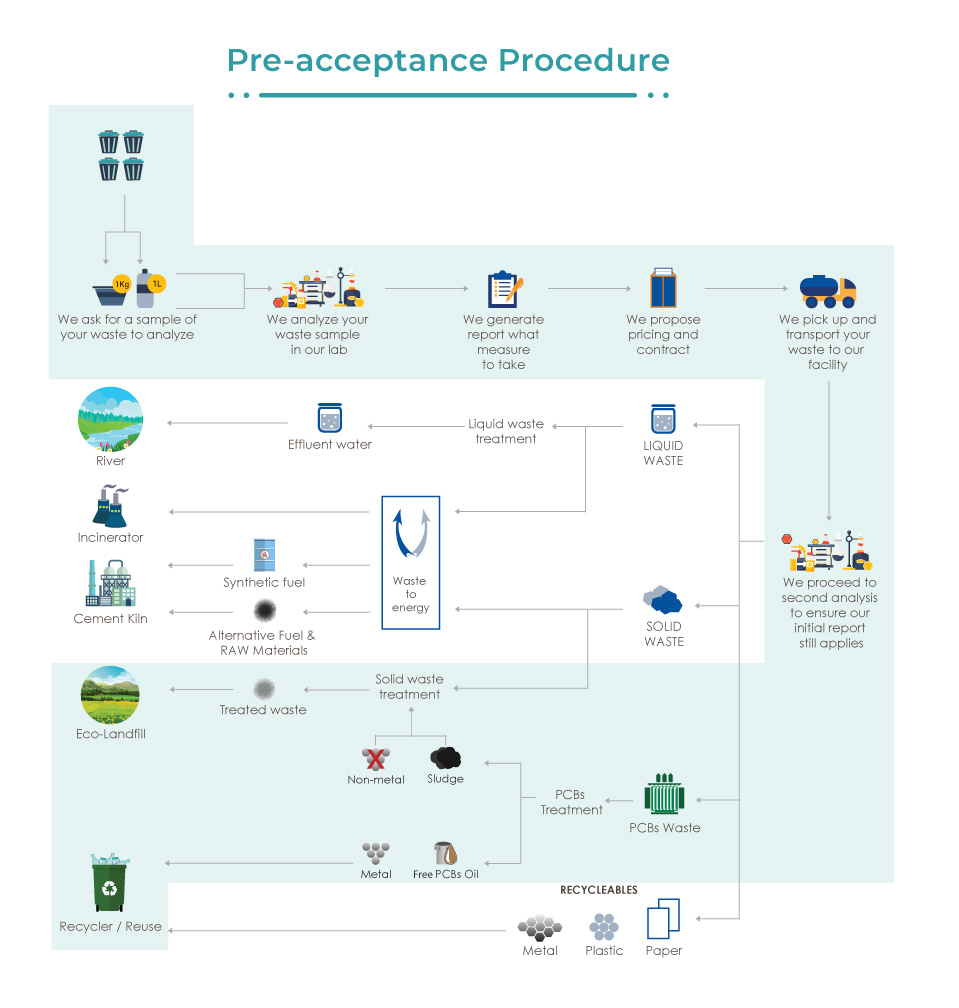
Why PPLI PCBs Treatment Facility?
- PPLI offers a broad, very comprehensive and fully permitted range of waste treatment and disposal solutions including PPLI new services, PCBs Treatment Facility. This gives PPLI flexibility and the ability to offer customers a ‘one-stop shop’ for all their waste needs.
- PPLI is the selected company by the Government of Indonesia to be the solution for the National PCBs Phase-out Project.
- The PCBs treatment facility at PPLI is built and engineered to meet international standards defined by UNIDO for decontamination and dehalogenation.
- PPLI have a fully equipped PCBs team and professionals to make sure waste are properly managed and permanently secured.
- Our services result in cleaner environments, better living conditions, healthier communities, and sustainable business activities.
- PPLI believes in 4R: Reduce, Reuse, Recycle and Recovery. By implementing 4R concept, we contribute to a better Indonesia.
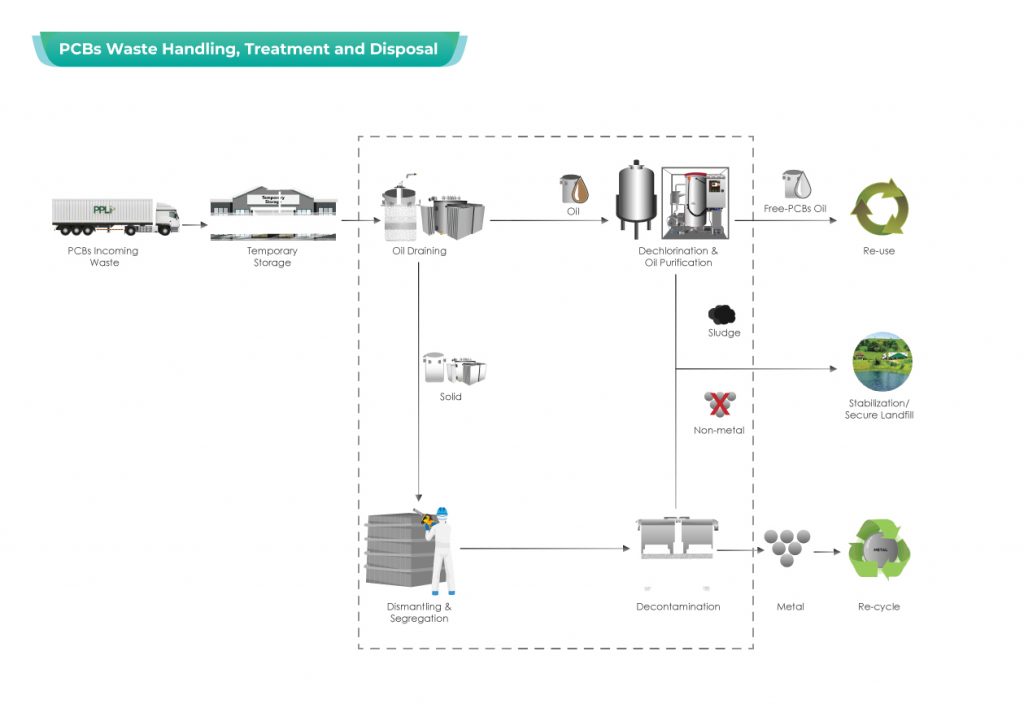
PCBs Waste Treatment Plan

Temporary Storage
PCBs treatment facility of PT. PPLI has its own temporary storage. PCBs waste from customer (waste generator) will be put in temporary storage in PCBs building. This temporary storage floor is designed and engineered with certain slope and containment area on each side. If there is a spill, it will flow immediately into containment area and it will not contaminate the environment of PCBs treatment facility. Temporary storage is located in the same area with PCBs waste unloading area and transportation. Temporary storage (including unloading area) has an area of 441 sqm. and also equipped with an overhead crane with 10 tons lifting capacity.

Oil Draining
PCBs waste in temporary storage will be moved to oil draining area. In oil draining process, PCBs oil will be pumped out from transformers or drums and collected in PCBs oil storage tank. The capacity of this tank is 5 m3. Oil draining is conducted above oil pan box as a kind of preventive action if there is any spill occurred during process. All of this activity is carried out in a controlled area. Furthermore, pumped PCBs oil will be processed in dechlorination and oil regeneration units. The empty transformers will be dismantled and segregated into several types of materials.

Dismantling and Segregation
Empty transformers will be dismantled and segregated into several types of material such as metal casing, copper, iron, ceramics, or plastic/ paper. Dismantling process is conducted to separate the parts of the transformers according to its type. Metal casing will be cut to adjust and fit with the dimension of autoclave unit (preparation for the next step: decontamination process). Dismantling activities are carried out in a controlled area, where the air in that area will be passed on an activated carbon filter before going out into the environment. Workers for this process are wearing Personal Protective Equipment (PPE) which is comply with safety standard such as respirator, coverall, safety shoes, safety helmet, goggles, and gloves, in order to minimize the exposure to workers.
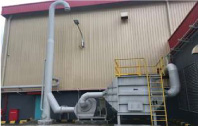
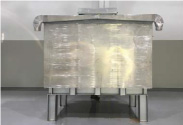
Decontamination
Decontamination process is a process of residue removal (PCBs oil) on transformers including its component by using solvent vapor. This process is carried out in an autoclave unit under vacuum condition and closed system. Solvent that is used in decontamination process are PerChloroEthylene (PCE) or TriChloroEthylene (TCE).
Solvent will be heated until its vapor phase and rinse the contaminant in material continuously. The solvent vapor thencondensed using cooling system and recycled in distiller (under vacuum condition) and evaporated again, and decontamination process repeated. This cycle will continue until the expected PCBs concentration has been reached. So that the solvent will be re-used and still running in the system.
If the decontamination target has been reached, the transformer/ material has already been decontaminated. Material is removed from the autoclave and “dried” in the drying area which is equipped with an activated carbon filter to ensure that no solvent vapor is released into the environment. The decontamination process workspace is also equipped with an activated carbon filter as a form of anticipation if there is solvent vapor released into the work environment.
Metal material from decontamination process can be recycled, and other material that can not be recycled will be processed and disposed in the landfill.
Dechlorination and Oil Purification

Dechlorination
PCBs oil that has been drained from transformers in oil draning process will be processed in dechlorination unit. This process is carried out in closed system and vacuum condition. Dechlorination process is the removal of one or more chlorine atoms in PCBs molecule using alkali metal. The reagent used in this process is sodium metal (Na). Sodium metal will form ionic bond with chlorine atom and combine into NaCl salt. Furthermore, PCBs molecule will turn into simply biphenyl (non-chlorinated). The chemical reaction occured as follow:

Sodium metal will be dissolved in PCBs oil (in small quantity) in reagent tank as a preparation step before being put into dechlorination tank. Reagent tank and dechlorination tank will be heated using diathermic oil boiler and maintained its temperature at 110 C. After that, sodium mixture will be pumped into dechlorination tank which containings PCBs oil and the reaction proceed. Dechlorination process is conducted in batch system.
The dechlorination reaction process takes approximately 30-60 minutes and periodically sampling is carried out to determine the concentration of PCBs in the dechlorination tank. When the process is complete (the PCBs concentration has reached the set target), the oil is ready to be filtered. Bleaching earth is added before the oil enters the filtering unit. Oil free PCBs from the dechlorination tank, after the temperature is lowered then filtered using a filter press. The filtered oil free PCBs will be further processed in the oil purification unit. The filtered cake or sludge is processed by Stabilization before being stockpiled in landfills.
Oil Purification
Oil free PCBs from the dechlorination process after the filtering process are pumped into the purification unit to reduce the water content to 10-15 ppm and remove dissolved gases. After this series of processes is completed, the oil free PCBs have been purified and ready to be used again in the transformer and have met the transformer oil standard/ specification.
Safety and Environmental Monitoring
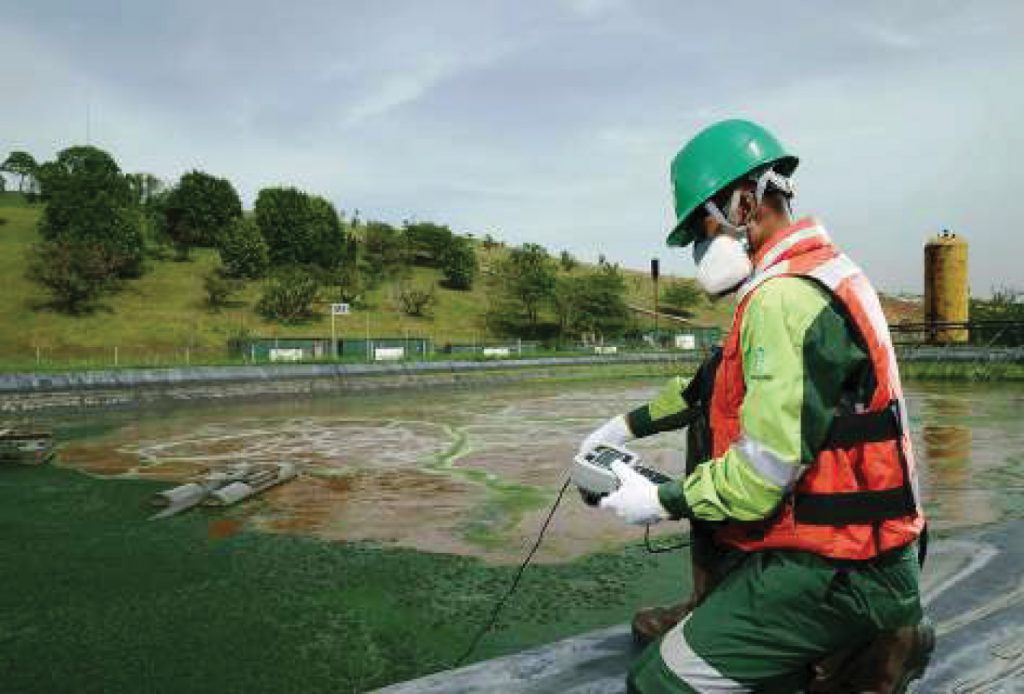
Picture 1. Surface Water Sampling
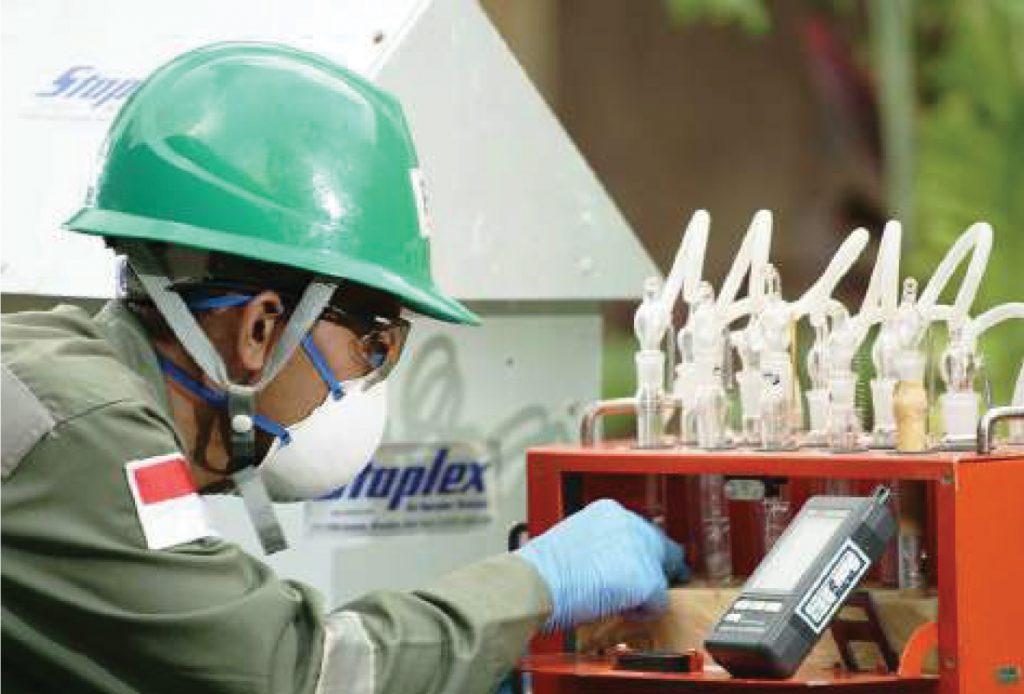
Picture 2. Air Ambient Sampling
Measures for Air Contamination
- Exhaust from vacuum pumps are pre-treated
by activated carbon as a safety net before
released
oleh karbon aktif sebagai jaring pengaman sebelumnya
dilepaskan. - Pembuangan dari area pembongkaran dilakukan pra-perawatan
oleh karbon aktif sebelum dilepaskan. - Negative pressure operations
Measures to Prevent Leakage
- Spill containment (drainage and sump pit)
- 1% slope of the building floor
- Floors are coated with epoxy.
Emergency Measures
- Automatic fire alarms
- Chemical fire extinguishers
- Fire hydrants
Regular monitoring for PCBs:
- Perchloroethylene in ambient air
- PCBs in surface water
Quality Control
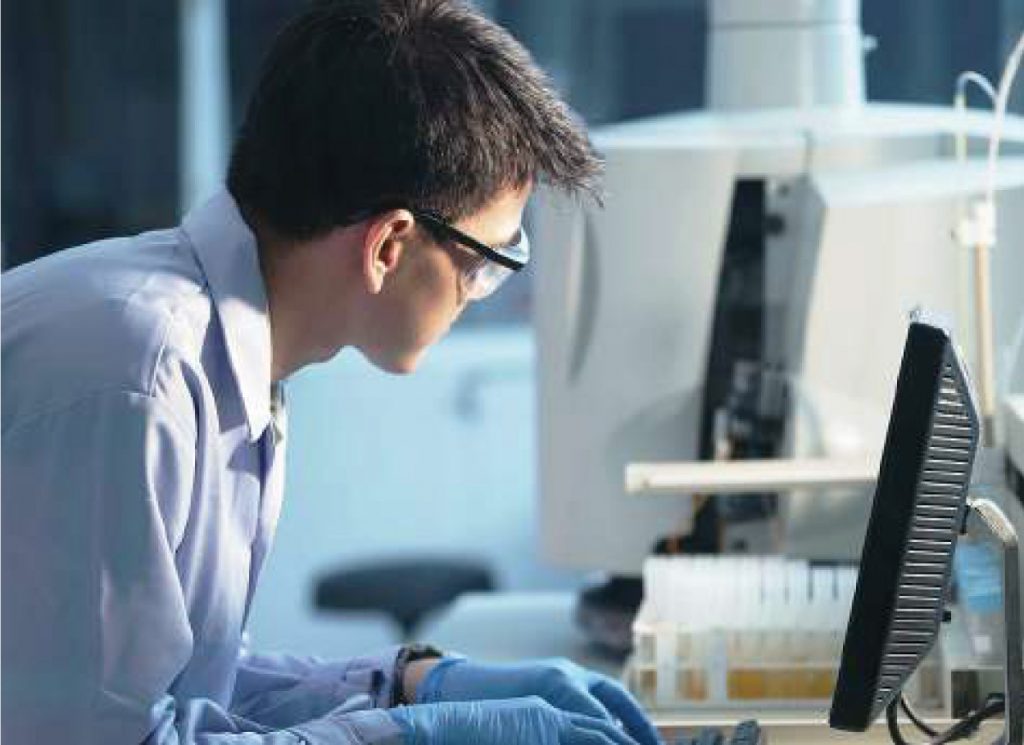
Picture 3. Laboratory Analisis
Quality control is conducted by a qualified analytical laboratory as certified by :
- ISO/ IEC-17025
- MOEF Approved Environmental Laboratory

